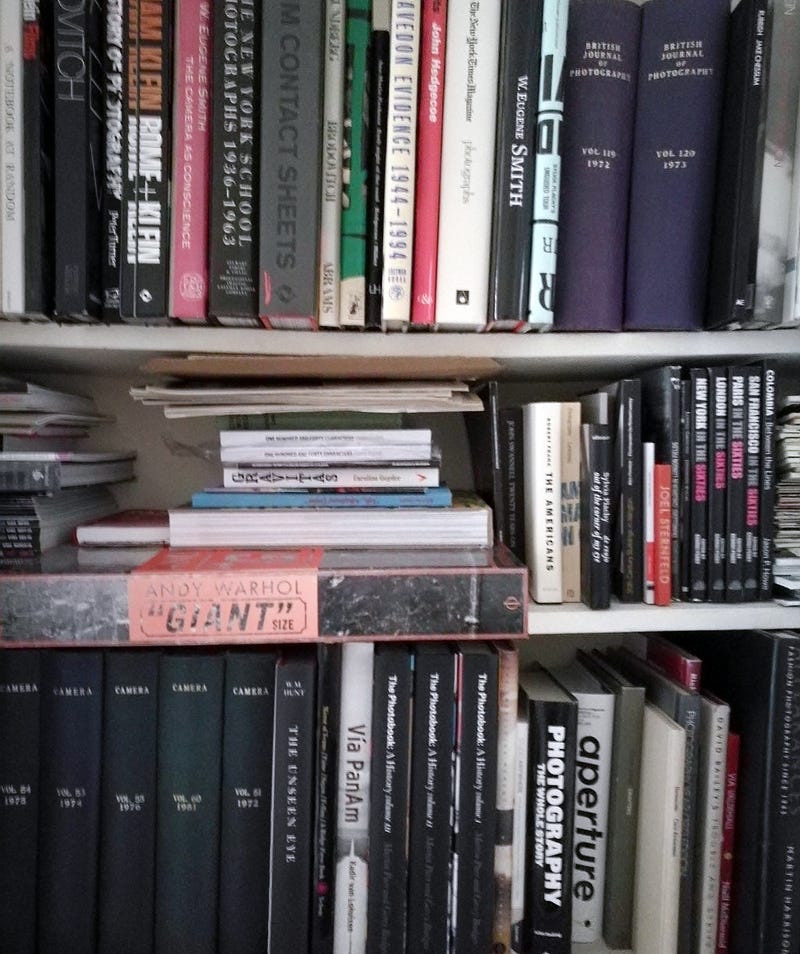Three Photobooks You Don’t Need to Buy or Own (Or Why Editors Matter…)

I recently purchased three photo books, well I say photo books but what I really mean to say is three books dealing with photography in three distinctly different ways. I’m not going to name or identify these books as there is no reason to in this instance. Instead I will outline how they connect with photography, what they are attempting to do and why in my opinion they fail.
The first is a catalogue to an exhibition. The second an overview of how different photographers work and the third a personal account of one photographers workflow and practice that he guarantees will improve your photography. Why did I buy these books? Because I missed the exhibition and wanted to see what was in it, because I was interested in the promise of the second book and I have no idea why I bought the third but too much wine and my one-click Amazon purchase set-up may well have something to do with that particular purchase.
Let’s deal with the first one first. I believe that a good exhibition catalogue provides a souvenir of a show, context to the exhibition through essays and perhaps interviews and an opportunity to return to an exhibition that no longer exists. Unfortunately this one was a classic case of style over substance. The exhibition had been widely praised for both its content and presentation but despite its good looking cover the catalogue is more about the designers typographic experimentation than the photography it is meant to showcase.
Both context and interviews are present but both fail to bring any new understanding to either the work or the exhibition. The work is beautiful, challenging and at times iconic but the book does it little justice with unsympathetic image juxtaposition and scale partnerships.
My solution? Make exhibition catalogues simple, with big images that have space to breathe and with text that is both engaging and informing. In short, good catalogues need good editorship.
Book two is published by a major publisher with a title that makes a bold promise. It has no image on the cover further emphasising the title. It’s a book packed with ‘stuff’ such as blogs, quotations, an image from each photographer and creative tips. It includes lots of iconic photographers others that are widely recognised by those who already have an informed knowledge of photographic history and some contemporary art photographers. The selection of inclusions is heavily influenced by the writers personal practice, which is fine and there is no doubt that it is well researched and comprehensive in what it includes.
But and this is a big but, I have owned this book now for eight weeks and every time I pick it up I put it down again. I just can’t bring myself to read it. It is too dense, its layout is unsympathetic to the content and there is just too much in it. It lacks a reason to exist other than as a repository for information.
My solution? Less is more or as the great German designer Dieter Rams proclaimed “Less but better”. A good book does not have to be all things to all people, it does not have to try and hit every touch point. It does however need a point of focus other than a catchy title created to ensure maximum Amazon search clicks. In short, good compilations need good editorship.
Book three makes the claim I find most distasteful amongst a certain genre of book and magazine aimed squarely at the enthusiast and aspiring professional photographer. This genre promotes the idea that by mastering a series of lighting and post-production techniques alongside ‘workflow’ solutions creative and financial success will be yours! Of course anyone with any experience of the industry will see the falsity of this promise. Such snake-oil salesman can make a good living from such books and the accompanying workshops and DVD’s and I accept that everyone has to make a buck but to make it on a false premise does little for the understanding of what it does take to achieve success as a professional photographer.
My solution? Less emphasis on quick fixes and more emphasis on reality, however unpalatable that may be. The celebrity of the photographer does not provide adequate validation for any suggested ‘secret to success’ that needs to be questioned and explored in depth before being presented as fact. In short, good ‘how-to’ books need good editorship.
The sad truth is that today publishers are rarely able to budget for an editor to work with an author when agreeing to publish a book. The margins are tight, the budgets are small and good editors are rare and difficult to find. Despite this editors are essential to a successful book, they push, shove, question, cajole and massage the author towards a good book.
When creating a photo book or book of photographs an art director, photo editor, fellow photographer or commissioning editor can all fulfil the role of the editor, supporting and questioning your decisions. Work with one and you should be pushed to produce your best, work without one and unquestioned self-indulgence is just a page turn away.
Grant Scott is the founder/curator of the United Nations of Photography, a Senior Lecturer in Editorial and Advertising Photography at the University of Gloucestershire, a working photographer, and the author of Professional Photography: The New Global Landscape Explained (Focal Press 2014) and The Essential Student Guide to Professional Photography (Focal Press 2015). His next book #New Ways of Seeing: The Democratic Language of Photography will be published by Bloomsbury Academic in 2018.
© Grant Scott 2017